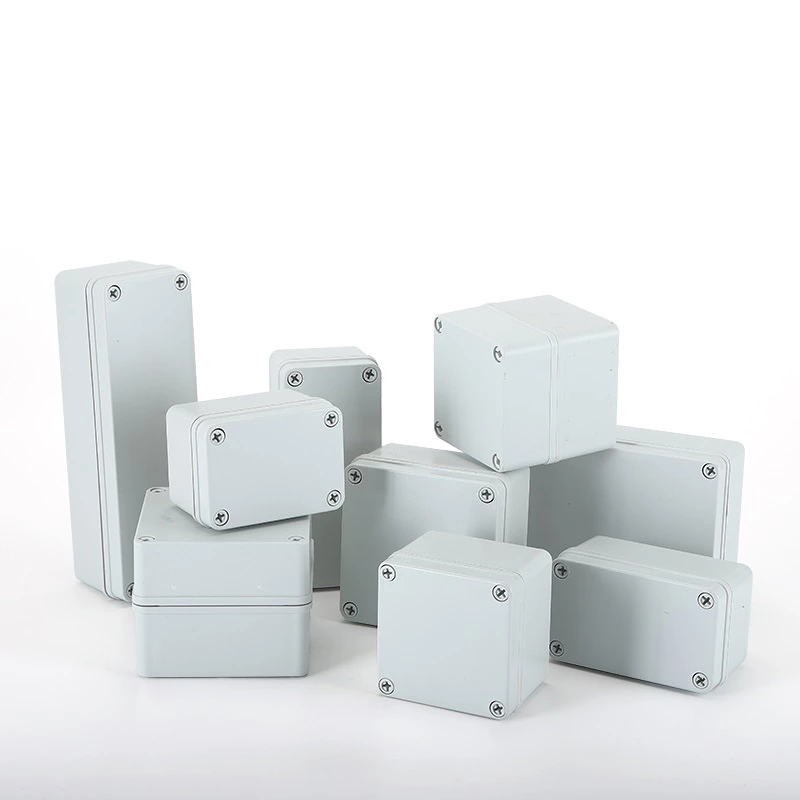Common Current Transformer Structure Principle
Distribution box Structural principle: The structure of the current transformer is relatively simple, consisting of mutually insulated primary windings, secondary windings, iron cores, frames, shells, terminals, etc. Its working principle is basically the same as that of a transformer. The number of turns (N1) of the primary winding is relatively small, and it is directly connected in series to the power supply line. When the primary load current () passes through the primary winding, the alternating magnetic flux generated induces a proportionally reduced secondary current (); the number of turns (N2) of the secondary winding is relatively large, and it is connected in series with the secondary load (Z) of the current coil of instruments, relays, transmitters, etc. to form a closed loop. Since the primary winding and the secondary winding have equal ampere-turns, I1N1=I2N2, the rated current of the current transformer is much smaller than the load impedance in actual operation of the current transformer, and the secondary winding is close to a short-circuit state, which is equivalent to a transformer in short-circuit operation. (Yueqing Donghua Electric Co., Ltd.)
The through-type current transformer itself does not have a primary winding. The current-carrying (load current) wire from L1 to L2 passes through a round (or other shaped) iron core made of rolled silicon steel sheets to act as a primary winding. The secondary winding is directly and evenly wound on the round iron core, and is connected in series with the secondary load of the current coil of the instrument, relay, transmitter, etc. to form a closed loop. Since the through-type current transformer does not have a primary winding, its transformation ratio is determined by the number of turns of the primary winding passing through the transformer core. The more turns through the core, the smaller the transformation ratio; conversely, the fewer turns through the core, the larger the transformation ratio, the rated current ratio: where I1 is the primary rated current when one turn through the core; n is the number of turns through the core.
Multi-tap current transformer. For this type of current transformer, the primary winding remains unchanged. When winding the secondary winding, several taps are added to obtain multiple different transformation ratios. It has an iron core and a primary winding with a fixed number of turns. Its secondary winding is wound with insulated copper wire on an insulating cylinder mounted on the iron core. The secondary winding taps with different transformation ratios are led out and connected to the terminal block. Each tap is provided with its own terminal, thus forming multiple transformation ratios. The advantage of this current transformer is that the transformation ratio can be changed by changing the wiring of the secondary terminal according to the load current transformation ratio, without the need to replace the current transformer, which provides convenience for use.
Current transformers with different transformation ratios. This type of current transformer has the same core and primary winding, while the secondary winding is divided into two independent windings with different turns to meet the needs of different ratios and different accuracy levels under the same load current. For example, under the same load, in order to ensure accurate energy measurement, the ratio is required to be smaller (to meet the load current of about 2/3 of the primary rated value) and the accuracy level is higher (such as 1K1.1K2 is 200/5.0.2); while the relay protection of electrical equipment, considering the large protection factor of fault current, requires a larger ratio and a slightly lower accuracy level (such as 2K1.2K2 is 300/5.1).
The primary winding is adjustable and the secondary multi-winding current transformer. This type of current transformer is characterized by a large ratio range and can be changed, which is more common in high-voltage current transformers. Its primary winding is divided into two sections, which pass through the core of the transformer respectively, and the secondary winding is divided into two independent windings with taps and different accuracy levels. The primary winding is connected to the connecting piece installed on the outside of the transformer. By changing the position of the connecting piece, the primary winding is connected in series or in parallel, thereby changing the number of turns of the primary winding to obtain different ratios. The tapped secondary winding itself is divided into two windings with different ratios and different accuracy levels. As the position of the primary winding connecting piece changes, the number of turns of the primary winding changes accordingly, and its ratio also changes accordingly, thus forming a multi-range ratio. The different ratios and different accuracy levels of the tapped secondary independent winding can be respectively applied to electric energy metering, indicating instruments, transmitters, relay protection, etc. to meet their respective different use requirements.
Combined current and voltage transformer. The combined transformer is composed of a current transformer and a voltage transformer, and is mostly installed in a high-voltage metering box or cabinet, used to measure electric energy or as a power source for relay protection devices of power-operating equipment. Combined current and voltage transformers are two or three current transformers with primary and secondary windings and cores and voltage transformers with primary and secondary windings and cores fixed on a steel frame and immersed in a box filled with transformer oil. The primary and secondary windings are led out and connected to high and low voltage porcelain bottles outside the box to form an insulated and closed whole. The primary side is connected to the power supply line, and the secondary side is connected to the metering device or relay protection device. According to different needs, combined current and voltage transformers are divided into V/V connection and Y/Y connection to measure the electric energy when the three-phase load is balanced or unbalanced.

